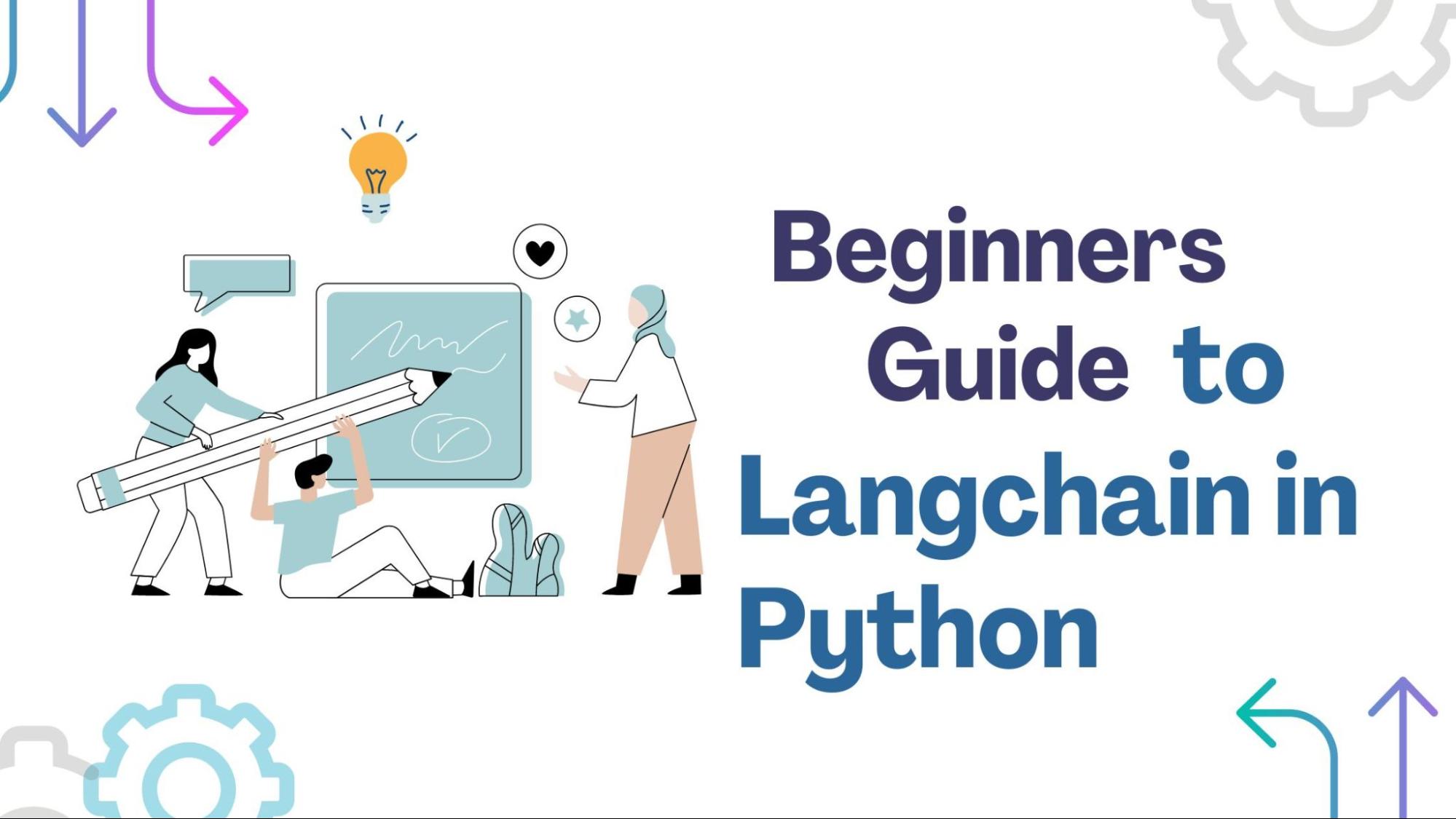Beginner's Guide to LangChain in Python
In this blog, we will learn about the LangChain framework, which is used to develop LLM applications that include ChatGPT with memory and long-term memory. These features will be explored in detail in future tutorials.
Introduction to LangChain
Let’s understand what LangChain is, its features, and its uses.
What is LangChain?
LangChain is a Python framework designed to simplify the creation of AI-based applications using large language models (LLMs). It combines “lang” (language) and “chain,” where “chain” signifies a sequence of connected components.
Why Use LangChain?
- Ease of use: Provides a standard interface for connecting various LLMs and tools.
- Flexibility: Supports diverse applications with multiple tools and integrations.
- Community: Has a large, active developer community offering support and resources.
Who is this Guide for?
This guide is for individuals working with LLM models, students learning about large language models, or developers creating NLP-backed applications.
Installation and Setup
Setting Up Your Development Environment
Create a Python virtual environment:
1
python -m venv envname
- Activate the virtual environment:
- Windows:
\venvname\Scripts\activate - Linux/Mac:
source /venvname/bin/activate
- Windows:
Install LangChain:
1
pip install langchain
If you encounter the error No module named ‘langchain’, verify your Python version and the installation process.
Features of LangChain
Models I/O
LangChain supports prompts, language models (LLMs and chat models), and output parsers for structured responses.
Chains
Chains integrate multiple components into a unified application, enabling seamless processing of user input and interaction with LLMs.
Memory
LangChain provides memory classes to store and recall past interactions, enabling short-term and long-term memory for LLM applications.
Agents
Agents act as middleware to direct the chain and choose appropriate tools or sequences of actions for the LLM application.
Creating Your First LLM Application in Python
1
2
3
4
5
6
7
8
9
10
11
12
13
14
15
16
17
18
19
20
21
22
23
24
25
26
27
28
29
30
31
32
33
#Import required LangChain methods:
from langchain import PromptTemplate, LLMChain, OpenAI
from langchain.memory import ConversationBufferMemory
#Design a prompt:
prompt_template = """You are a chatbot having a conversation with a human.
{chat_history}
Human: {human_input}
Chatbot:"""
#Implement a memory model:
memory = ConversationBufferMemory(memory_key="chat_history")
#Create a prompt template:
prompt = PromptTemplate(
input_variables=["chat_history", "human_input"],
template=prompt_template
)
#Create an LLM chain:
llm_chain = LLMChain(
llm=OpenAI(),
prompt=prompt,
verbose=True,
memory=memory
)
#Run your application:
print(llm_chain.run("Who was the 5th president of the United States?"))
1
Output: James Madison was the 5th President of the United States.
Where to Go from Here?
Now that you have a foundational understanding of LangChain, explore additional resources:
- Official documentation
- Tutorials on YouTube and the LangChain website
- Community discussions on GitHub and Reddit
FAQs
Question: is LangChain used for?
Answer : LangChain is used for creating applications like chatbots, document summarization, code analysis, and more.
Question: What is the difference between LangChain and LLM?
Answer : LangChain is a framework, while LLM is a model used for NLP tasks.
Question: Why is it called LangChain?
Answer : The name reflects its use of chaining components to build LLM applications.
Question: What version of Python is best for LangChain?
Answer : LangChain works best with Python versions 3.7 to 3.11.
“@context”: “https://schema.org”, “@type”: “FAQPage”, “mainEntity”: [{ “@type”: “Question”, “name”: “What is LangChain used for?”, “acceptedAnswer”: { “@type”: “Answer”, “text”: “LangChain can be used for various applications, including Chatbots, Document summarisation, Code analysis, Question answering, Natural language generation, Text classification and Sentiment analysis.” } },{ “@type”: “Question”, “name”: “What is the difference between LangChain and LLM?”, “acceptedAnswer”: { “@type”: “Answer”, “text”: “The core difference between langchain and LLM is that langchain is a python framework, and the LLM is the large language model or an AI model used for NLP tasks.” } },{ “@type”: “Question”, “name”: “Why is it called LangChain?”, “acceptedAnswer”: { “@type”: “Answer”, “text”: “The reason behind the word langchain is that langchain uses the chain method to develop the LLM model, which is called the large language model; that’s why it’s called langchain.” } },{ “@type”: “Question”, “name”: “What version of Python for LangChain?”, “acceptedAnswer”: { “@type”: “Answer”, “text”: “Most subtable python versions will be 3.7 to 3.11 for langchain use.” } }] } </script>
